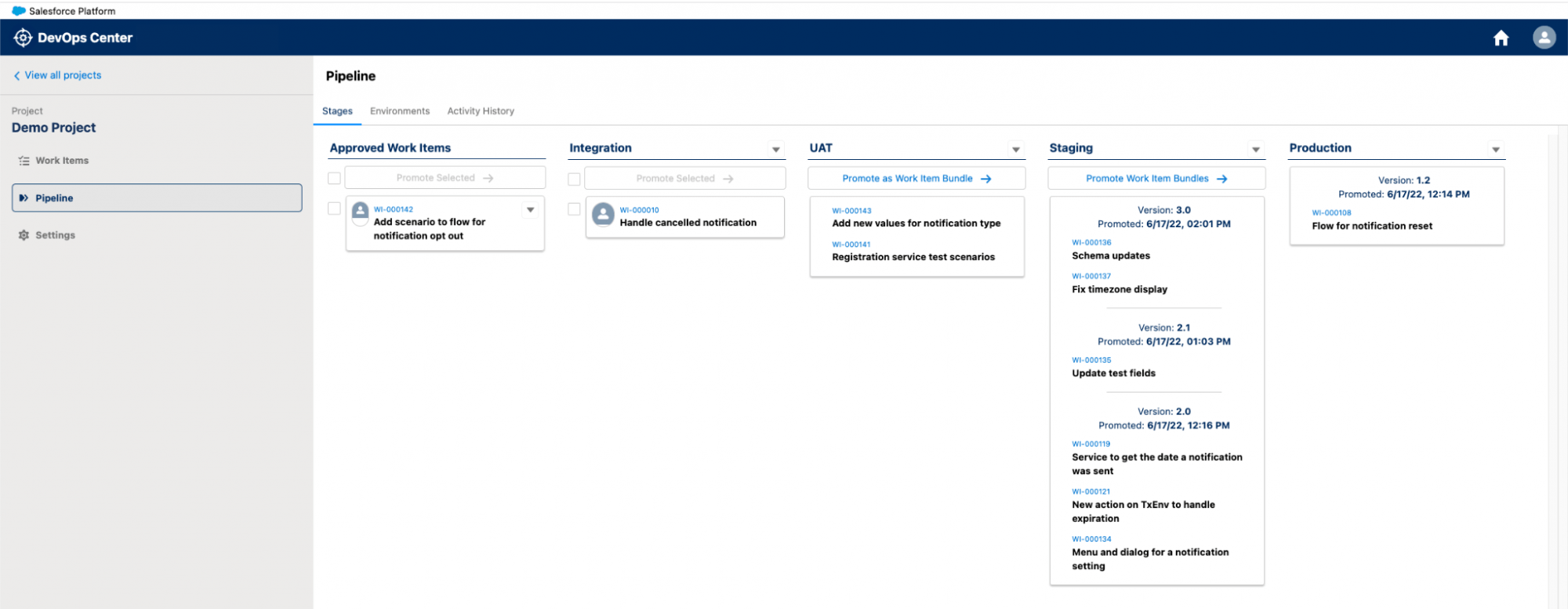Salesforce is a central component of most companies’ business tech stack. If this resonates with you, you might have already started using DevOps tools to optimize Salesforce development and deployment, or maybe you’ve been thinking about introducing them.
In this blog post, I’ll discuss what DevOps tools are available for Salesforce in 2024 and compare their functionality.
DevOps tools for use with Salesforce
The DevOps tools available for use with Salesforce in 2024 can be divided into several categories.
| Salesforce OOTB | Tools for building custom DevOps processes | AppExchange and third-party tools |
| Salesforce DevOps Center,Change Sets, Salesforce DX, Metadata API, VS Code | Jenkins, Travis CI, GitHub Pipelines, Bitbucket Pipelines, GitLab Pipelines | Copado, Gearset, Flossum, AutoRABIT |
The tools have different features but, in general, aim to perform the following tasks:
- Provide prompt, bug-free, secure deployments
- Manage a rapid and sustainable release cadence
- Improve collaboration between developers, testers, and admins
- Decrease the number of errors and bugs
Now, let’s consider their technical capabilities, benefits, and limitations.
Salesforce DevOps Center
The first DevOps tool that deserves special attention is Salesforce DevOps Center. It’s platform-native, free, and addresses diverse tasks, which makes it a self-sufficient tool for some organizations.
With Salesforce DevOps Center, developers can manage version control, continuous integration, and continuous software deployment and work collaboratively, automate manual tasks, and improve the quality of their applications—all in a centralized hub that allows teams to manage the entire application lifecycle.
DevOps Center uses the capacities of Salesforce DX development tools, including Salesforce DX project compatibility, Metadata API, Salesforce CLI, and source control. At the same time, there is no need to be familiar with all of these tools to work with Salesforce DevOps. This means all team members, including developers, admins, and managers, can collaborate to introduce changes.

Benefits of Salesforce DevOps Center:
- A centralized hub allows teams to manage the entire application lifecycle, from planning and development to testing and release.
- A set of integrated tools allows developers to easily manage version control, continuous integration, and continuous deployment.
- It’s not necessary to integrate with third-party tools because DevOps Center is native to the Salesforce platform.
- DevOps Center provides a user-friendly interface with easy-to-use tools.
Limitations of Salesforce DevOps Center:
- It may not offer the same level of functionality as some of the other DevOps tools for Salesforce on the market, especially for larger enterprises with complex development requirements.
Although DevOps Center is a multifunctional solution, it isn’t the only tool used to optimize Salesforce processes. Let’s consider some other popular products.
Tools for managing Salesforce development
Copado, Flosum, and Gearset are tools for managing Salesforce development. These tools are designed to integrate with other development tools like JIRA, Jenkins, and Git. However, they can be expensive for small businesses with limited budgets, and the learning curve for using these tools can be steep for those new to Salesforce DevOps. Some of them also have a complex user interface, which can be overwhelming.
| Copado | Flosum | Gearset | |
| Features similar to Salesforce DevOps Center tools |
Version control, CI/CD, |
Continuous delivery and release management, version control |
Continuous delivery and release management, deployment automation, version control for Salesforce |
| Additional features | Automated testing, compliance, security, release management, compliance tracking, test automation | Data deployment, version control for data, deployment groups | Automated testing, impact analysis, data comparison |
| Pros | Comprehensive toolset for Salesforce development, user-friendly interface with easy-to-use tools, integrates with other development tools like JIRA, Jenkins, and Git | Native version control, support for complex deployment needs |
Cloud-based, easy to set up and use, offers a comprehensive set of Salesforce DevOps features, user-friendly interface, simplified deployment configurations |
| Cons | Often expensive for small businesses with limited budgets, steep learning curve for those new to Salesforce DevOps (Copado), complex for smaller projects | Limited support for non-Salesforce development processes | Integration limitations, may not cover all Salesforce features |
Salesforce deployment tools
Change Sets, Metadata API, and VS Code+Salesforce DX are deployment tools provided by Salesforce at no additional cost. They are easy to implement and require minimal configuration, making them a good option for small to medium-sized businesses with simple deployment requirements. However, these tools cannot automate and orchestrate deployments, which can result in errors and delays. They may also be difficult to maintain as manual effort is required to deploy changes.
| Change Sets | Metadata API | VS Code+SFDX | |
| Features similar to Salesforce DevOps Center tools | Deployment of metadata changes between environments | Programmatic access to metadata operations, deployment automation | Source-driven development |
| Additional features | Point-and-click deployment, dependency tracking | Granular control over metadata, scripting support, destructive changes | Extensions marketplace, integrated source control, language support |
| Pros | User-friendly interface, integrates with Salesforce setup | Programmatic control supports bulk deployments | Lightweight, modern development experience, wide-ranging extensions |
| Cons | Limited automation, manual packaging process | Learning curve for scripting may require additional tools, high entry threshold | Dependency on extensions, potential conflicts with VS Code settings |
Custom-built deployment pipelines
Jenkins, Travis CI, GitHub Pipelines, Bitbucket Pipelines, and GitLab Pipelines offer greater flexibility and functionality than Salesforce deployment tools, allowing for more complex deployments. They offer a higher degree of automation and orchestration, reducing the risk of errors and delays. However, they require additional configuration and setup, which can be time-consuming and require technical expertise. They may also involve additional costs for setup, maintenance, and licenses and require ongoing maintenance and updates.
| Jenkins | Travis CI | GitHub Pipelines | Bitbucket Pipelines | GitLab Pipelines | |
| Features similar to Salesforce DevOps Center tools | Supports CI/CD workflows, integration capabilities | CI/CD, matrix builds, parallel testing, version control integration | CI/CD, parallel testing, version control integration | CI/CD, parallel testing, version control integration | CI/CD, parallel testing, version control integration |
| Additional features | Scalability, large support community, configuration as code (Jenkinsfile) | Container-based builds, build matrix configuration | Actions, GitHub Apps, GitHub Pages, code scanning, deployment options | Docker support, deployment options |
Integrated CI/CD, project management tools, deployment options |
| Pros | Flexibility, customization options, support for various plugins | Easy setup, cloud-based infrastructure, supports open-source projects | Tight integration with GitHub, automated workflows, strong collaboration | Native integration with Bitbucket, simple YAML configuration, integration with GitHub and GitLab | Comprehensive DevOps platform, CI/CD, version control, built-in container registry |
| Cons | Steeper learning curve, infrastructure maintenance | Limited concurrency in a free plan, less customization | Limited free minutes for CI/CD, learning curve for complex workflows | Limited extensibility beyond Bitbucket, fewer built-in integrations | UI complexity, resource-intensive for small projects |

